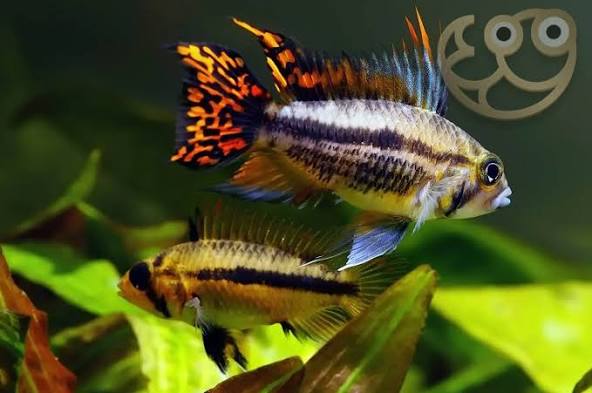1
/
trong số
1
Midwest Aquarium and Pond Supplier LLC
(125) Cockatoo Dwarf Cichlid 1-2''
(125) Cockatoo Dwarf Cichlid 1-2''
Giá thông thường
$35.00 USD
Giá thông thường
Giá ưu đãi
$35.00 USD
Phí vận chuyển được tính khi thanh toán.
Số lượng
Không thể tải khả năng nhận hàng tại cửa hàng
The Cockatoo Dwarf Cichlid (Apistogramma cacatuoides) is a popular and relatively hardy dwarf cichlid from the Amazon River basin. Prized for the male's vibrant colors and tall, spiky dorsal fin that resembles a cockatoo's crest, this species is a great centerpiece for a planted community aquarium
Tank setup
- Tank size: A 20-gallon or larger tank is recommended for a pair or a small harem (one male with several females). For a community tank, a larger tank (30+ gallons) provides more stable conditions and space to minimize aggression.
- Substrate: Use a soft, fine sand substrate. Like other "earth-eaters," Apistogramma will sift through the sand for food.
- Decorations: Provide plenty of hiding spots and visual barriers using driftwood, rocks, caves (like clay pots or coconut shells), and dense live plants. This helps establish territories and reduces aggression.
- Filtration: A gentle but consistent filtration system is ideal. Sponge filters are an excellent choice because they provide good biological filtration without creating a strong current, which these fish dislike.
- Lighting: Subdued or dim lighting is preferred. Floating plants can help diffuse bright light.
Water parameters
- Temperature: Maintain a stable temperature between 72–84°F (22–29°C).
- pH: A neutral to slightly acidic pH of 6.0–7.5 is tolerated by tank-bred specimens, but stability is more important than an exact number.
- Water quality: Like other dwarf cichlids, they are sensitive to poor water quality. Keep nitrates below 20 ppm with weekly partial water changes.
Diet and feeding
- Carnivorous diet: A. cacatuoides are micropredators that feed on small invertebrates in the wild.
-
Food types: A varied diet is essential for vibrant colors and good health.
- Staple: High-quality pellets or flakes designed for carnivores.
- Supplements: Include frozen or live foods, such as bloodworms, brine shrimp, and daphnia.
- Feeding schedule: Feed small amounts two to three times per day to encourage natural foraging behavior.
Temperament and tank mates
- Temperament: While generally peaceful, males can become territorial, especially toward other males or during spawning. Keeping a single male with multiple females can help spread out aggression.
-
Tank mates: Choose peaceful, non-aggressive species that occupy the middle to top sections of the tank.
- Ideal companions: Small schooling fish like tetras (e.g., Neon, Ember), Corydoras catfish, and Rasboras.
- Incompatible companions: Avoid keeping them with aggressive or larger fish that might bully them. Also avoid dwarf shrimp and other small, delicate invertebrates that may become prey.
Breeding
- Cave spawners: A. cacatuoides are cave spawners, with the female guarding the eggs inside a cave.
- Parental care: The female will care for the eggs and fry, while the male defends the outer territory.
- Encouraging spawning: Provide plenty of caves and raise the tank temperature slightly.
Share
No reviews

